We receive many queries from Odissi Dancers across the globe about Odissi Dance costume jewellery. Dancers want to know what the traditional Odissi Dance costume jewellery is, and which pieces of the Odissi Dance Jewellery Sets are available in Silver Filigree.
So we thought it would be good write a blog on Odissi Dance Jewellery Sets that are so meticulously and passionately handcrafted by our artisans in Cuttack. After all, the hard work done by our artisans deserves to be shown to the world, especially to the patrons of the oldest dance form in India.
To start with, we would like to introduce our readers to the world famous Silver Filigree of Cuttack.
Silver Filigree is a 5000 year fine art of silver where silver is first drawn into wires, and then handcrafted into various forms of jewellery. The entire silver filigree jewellery is handmade by the artisans in Cuttack.
Long Necklace: The selection process for Odissi Dance Costume Jewellery starts with the long necklace that is the most important piece of jewellery. The long necklace has a big central motif (pendant) and the rest of the necklace has smaller motif. The necklace is adjustable in size, and is usually quite long and ends just above the waist belt.
The two most common types of necklaces are madhumati and floral. The madhumati necklaces are in silver without any filigree work. The floral necklaces have a floral theme and are made of filigree work.

Short necklace: The short necklace usually matches the long necklace, and is much shorter of length. It embraces the neck.
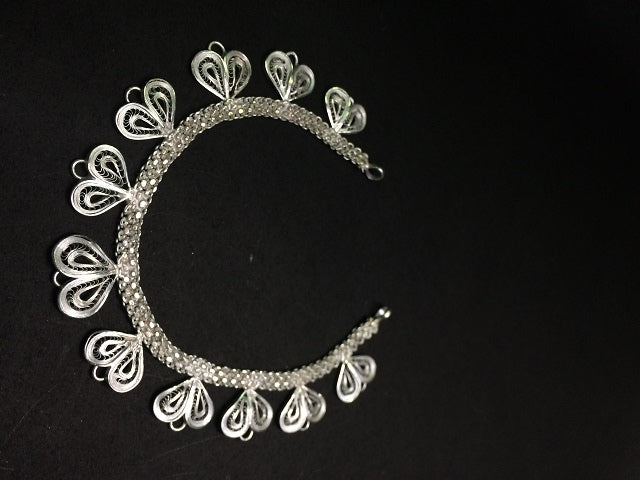
Earrings or Kaan or Kapas: The earrings worn by dancers cover the entire ear and have jhumkas at the bottom. The earrings adorned by dancers are usually of two types. The first one is peacock kaan that covers the entire ear, and is in the shape of peacock. The second one is floral earrings that match the long necklace and covers the ear. The kapas also have a silver chain that are secured in the hair to hold the earrings in place.
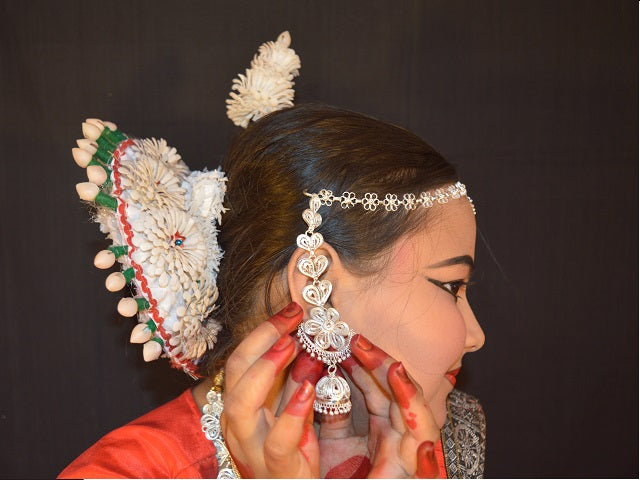
Mathapatti or maang tikka: The mathapatti or maangtikka is worn on the forehead and the design usually matches the long necklace. The maangtikka may have a single silver chain that is fastened in the maang or central parting of the hair. Alternatively the mathapatti may have three silver chains that are fastened on the center and the two sides.
Waist Belt or Bengapatia: The waist belt is worn around the waist and is usually functional in keeping the Odissi Dance Saree in place. The belt has motifs of silver work that are tied together and held in place using a red rope. The ropes are then tied in a knot behind the waist. The belt comes in free size, and may be worn by kids as well as adults. The traditional silver filigree Odissi Dance Waist belt comes with 3 lines of silver motif.
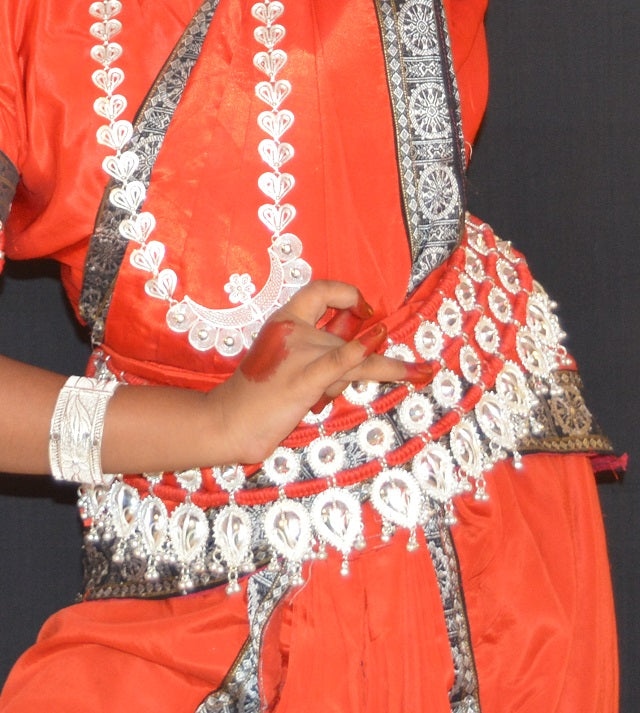
Armlets or Bajuband or Tayita: The armlets are worn on both arms, and are adjustable in size to fit any arm. It comes in three different categories:
The first category is a think solid armlet without any filigree work. The sides are held together with red ropes and tied around the waist.
The second category is armlets with two to four lines of uniform silver motif. The motif may or may not have filigree work. The length is adjustable, and the sides are held together with a silver chain and hook.
The third category of armlets have a central motif that matches the long necklace and is made in filigree. . The length is adjustable, and the sides are held together with a silver chain and hook.

Bangles or Kangans or Kankanas: The bangles are usually broad and cover the wrist, and are adorned on both wrists.
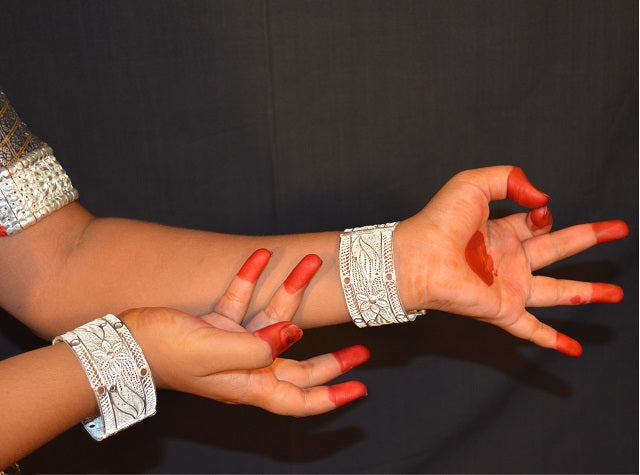
Tahia or Crown or Headpiece: A headpiece is worn around the hair bun to keep the hair in place. The headpiece resembles a hairband and has elaborate filigree work.

A peacock hair pin is sometimes worn on the bun to add to the richness of the Odissi Dance Costume.
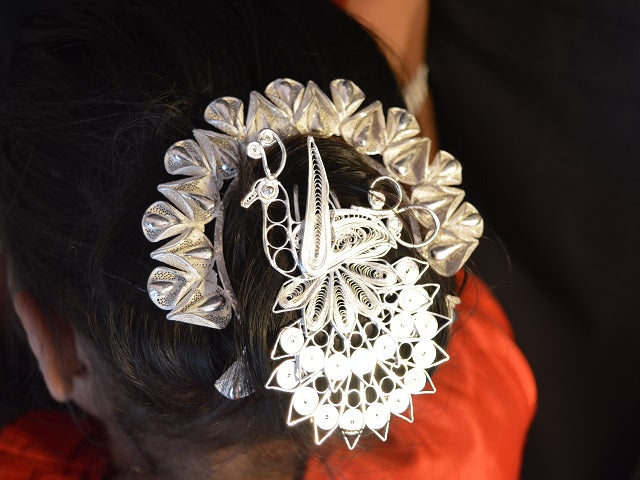
Please reach out to us should you have any questions.

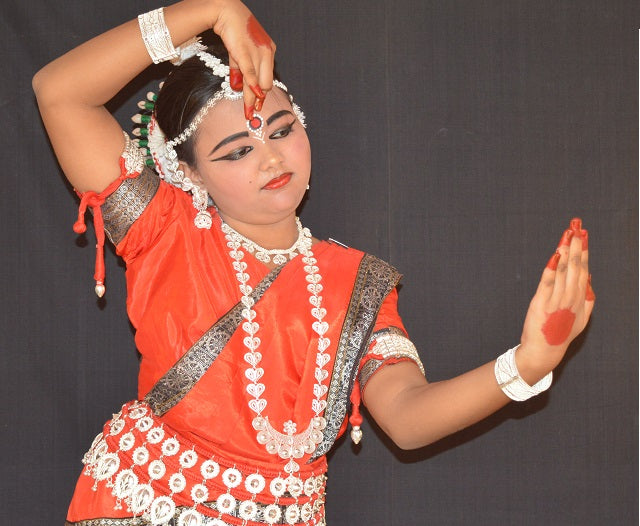

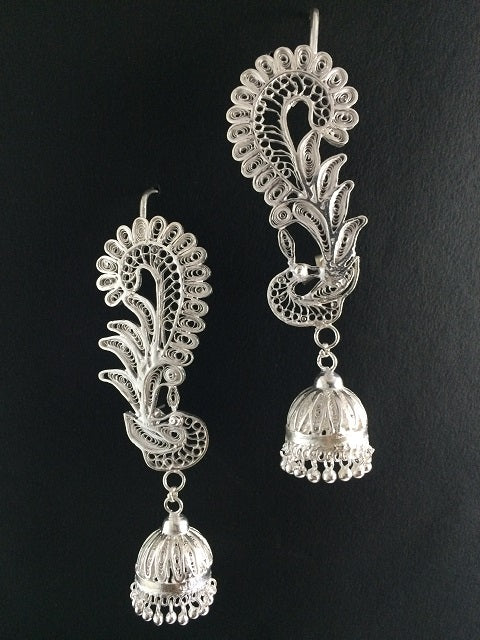
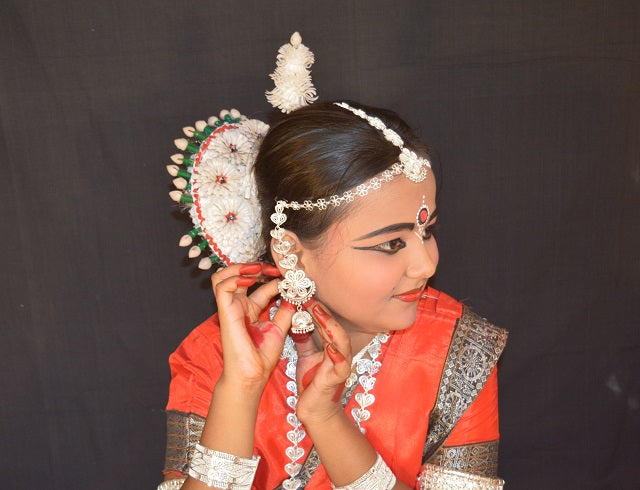
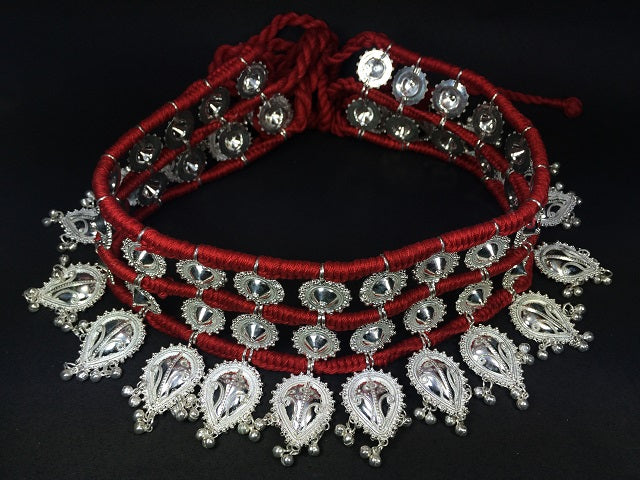
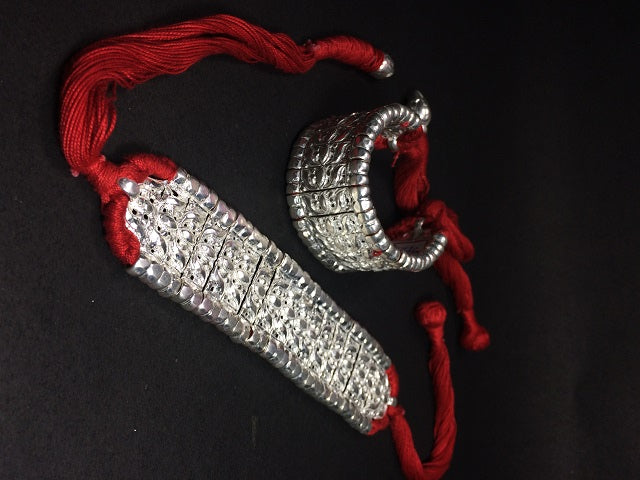
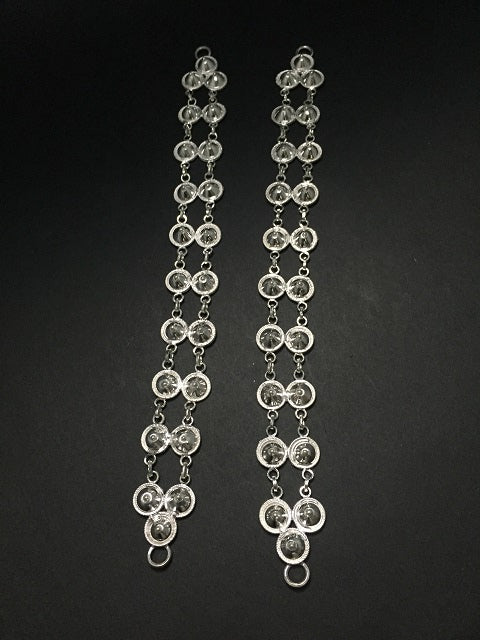
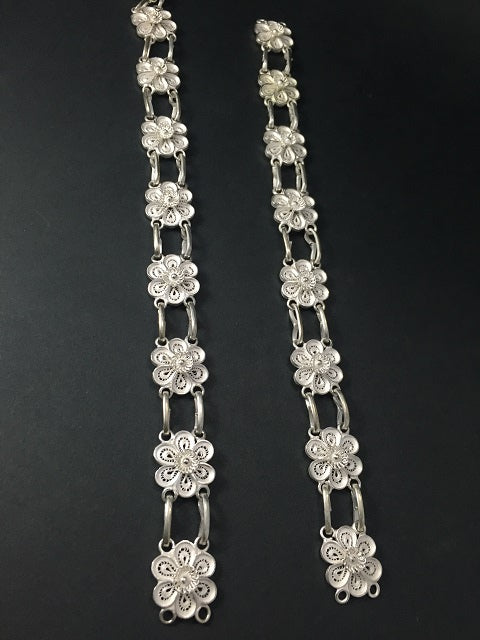

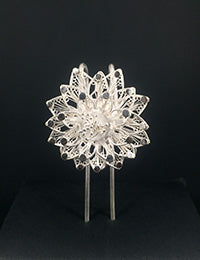
Very good collection of Odissi Dance Jewellery Sets. Very detailed blog on all Odissi Dance Jewellery. Thank you!